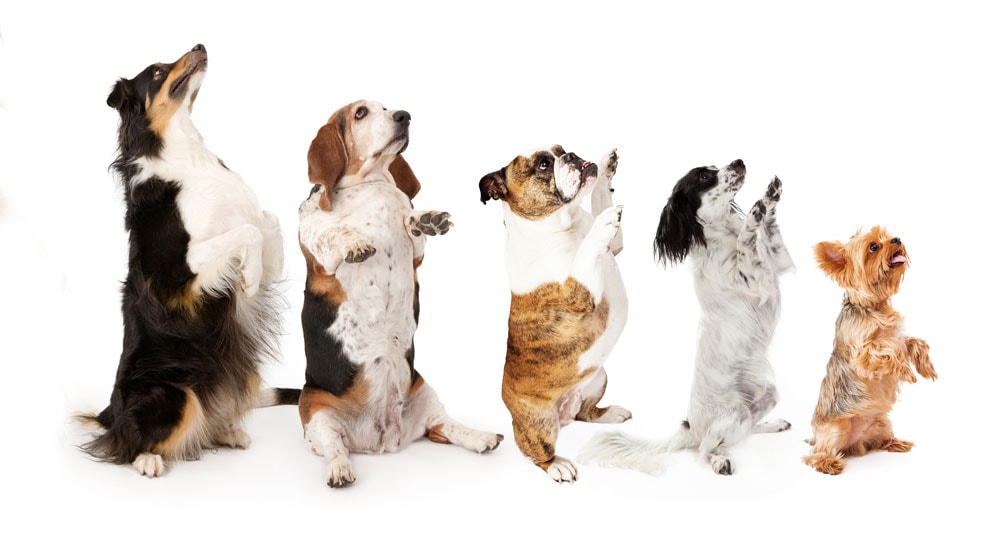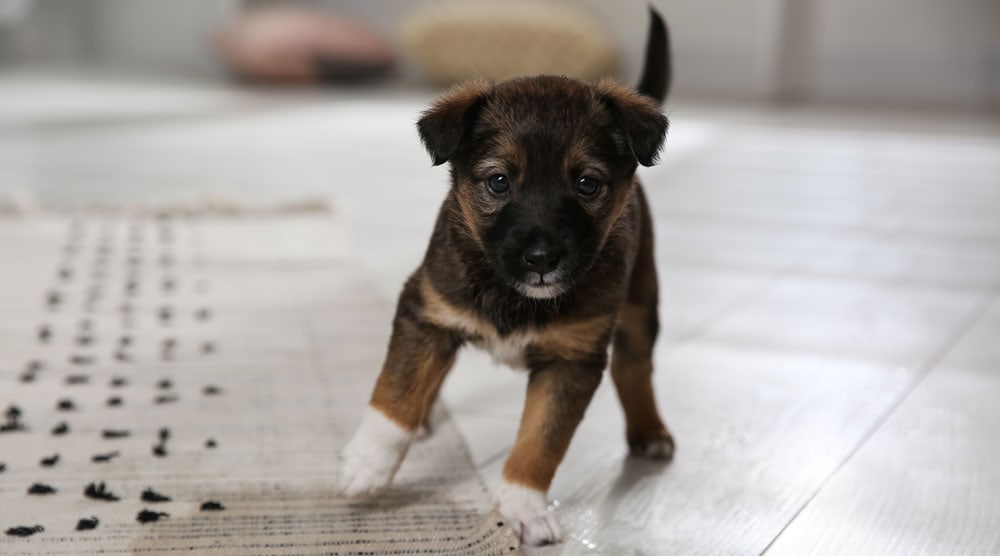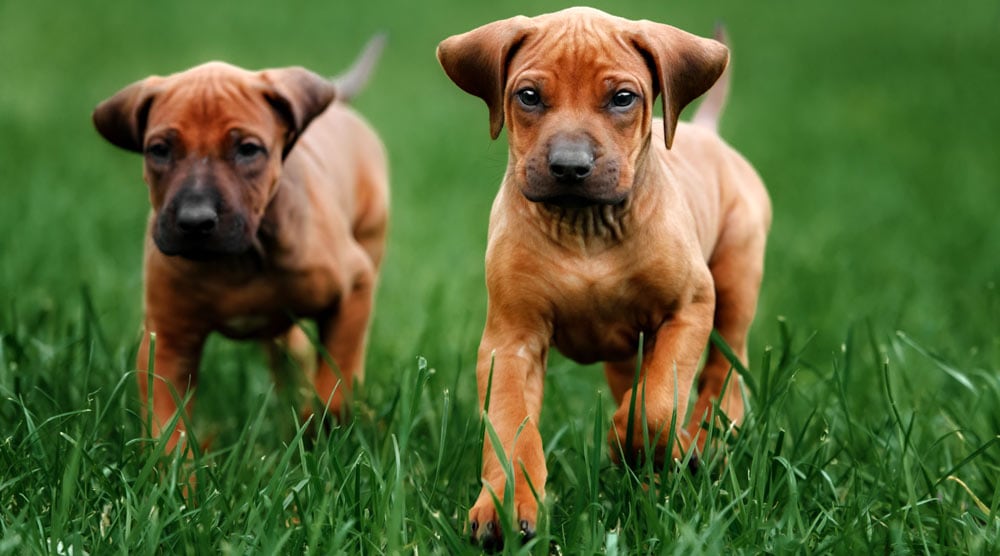Quick Answer
- A dog’s growth plates typically close at approximately nine to eleven months old.
- When this happens, the dog is unlikely to grow much in weight or height. They may continue to fill out and lose that gangly puppy look though.
- It’s important to understand that 9-11 months is the average age. The actual age can vary depending on breed size and other factors.
- Small dogs may stop growing in as little as six months. Bigger dogs may continue to grow beyond the year mark.
There is no set age when dogs stop growing. A dog’s breed, sex, nutrition, health, and genetics all play a role in when your puppy reaches their final size.
However, there are ways to estimate when your dog will likely stop growing. With the help of veterinary surgeon Dr Linda Simon, let’s take a closer look at the main factors affecting your dog’s growth and eventual size.
Contents
7 Factors That Affect When a Dog Stops Growing
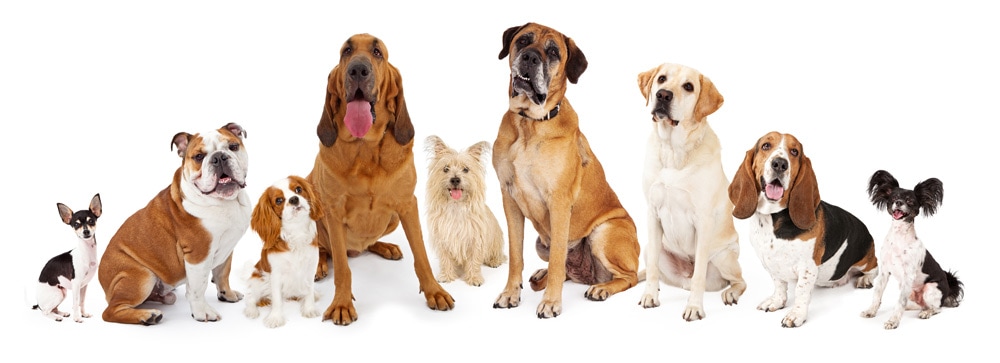
Breed Size
Your dog’s breed (or breed combination for mixed breeds) is probably the best predictor of when they’ll finish growing.
Generally speaking, the smaller the dog breed, the earlier the dog will reach maturity. That’s not too surprising: a 5 lb adult Chihuahua has a lot less growing to do than a 200 lb Mastiff!
- Small breeds, like the Dachshund and Corgi, reach their full size between eight and 12 months but may do so sooner.
- Medium-sized breeds, like the Collie, stop growing within the eight to 12-month range.
- Large breeds (breeds that reach 50 to 100 pounds in adulthood) generally finish growing between 10 and 16 months, but may continue filling out longer.
- Finally, giant breeds usually stop growing around 10 to 16 months, like large breeds, but some continue to grow until they’re 18 months or even older.
As an article in the Journal of Nutrition mentions, this difference in growing ages doesn’t just affect the eventual size, but also when a dog should be fed as an adult:
“Although a toy or small-breed dog may be considered an adult (and fed accordingly) from ∼9 months of age, adulthood in the largest breeds is not achieved until ∼15 months of age.”
For this reason, discuss switching to adult food with a vet, as they have experience judging the growth of a wide range of breeds.
Mixed Breeds
According to a 2011 study, 53 percent of pet dogs in the United States were mixed breeds – but the percentage is likely to be even higher today.
“Since the survey, there has been a large rise in so-called designer dog breeds,” says Dr Linda Simon. “Indeed, most of my caseload is now Poodle crosses, like the Cavapoo and Goldendoodle.”
For mixed breeds, it can be more complicated to estimate when they will stop growing.
If you know which breeds make up your dog’s breed, the average size can help predict when your puppy will stop growing. But there’s no way to know for sure, unless you’re willing to pay for a DNA test, especially since many mixed breeds have unclear ancestry.
Sex
As a general rule, male dogs grow larger than female dogs.
“Males will nearly always grow larger than females when they are from the same litter,” confirms Dr Simon. As a consequence, it often takes male dogs a bit longer to stop growing.
This doesn’t mean that a male dog of a specific breed is always bigger than females of the same breed though. Genetics, nutrition, health, and other factors all play a role.
Nutrition
Puppy owners are often concerned about how diet affects growth – and for good reason. Puppies need a nutritionally balanced diet to avoid stunted growth.
Specially formulated puppy food is the best option to provide this, but it’s not essential. As long as your puppy is getting enough vital nutrients and minerals, slightly underfeeding or switching to adult food a bit too soon isn’t going to severely affect growth or their eventual size.
In fact, it’s more dangerous to over-feed, as this can cause obesity and damage developing joints. There’s also been an excellent study by Purina that showed slightly underfeeding dogs actually contributes to a higher quality of life and a long lifespan.
In other words, you shouldn’t be worried about “fattening up” your puppy as they grow. As long as they are getting the required nutrition, a slim dog is generally healthier!
It’s also important to adjust food quantity as your dog grows. “Dogs need fewer calories once they reach about six months of age and their growth tapers,” says Dr Simon.
“At this point, many dogs start to eat less, which can be worrying for owners. Lots of owners try to ‘fix’ this by offering extra tasty foods and treats, which can cause obesity.”
Note: You shouldn’t switch to adult food based on size. This decision depends on the dog’s age and whether they have stopped growing, so it’s best to consult your vet.
Worm Infestation
Intestinal worms, like hookworms and roundworms, can cause a delay in growth if the infestation is severe enough.
These parasites are common in the US and aren’t exclusive to neglected or yard dogs. All pet owners should keep an eye out for symptoms such as an unhealthy coat, diarrhea, a bulging tummy, and a small build despite a huge appetite – although worms may cause no visible symptoms.
Fortunately, once worm treatment has been completed, your puppy’s body will resume their natural growth.
As with most medical issues, prevention is always better than cure though. “Owners should de-worm their dogs routinely, whether they have signs of a worm infestation or not,” says Dr Linda Simon. “Dogs constantly lick grass, eat soil, and get into other mischief, which regularly exposes them to worms.”
“Most healthy adults need to be de-wormed 2-4 times a year, depending on their diet and lifestyle,” she adds. “I mostly see worms in puppies, but they certainly occur in adult dogs too.”
Spaying & Neutering
A common misconception is that an early spay or neuter stops a puppy’s growth early due to differences in hormone production. In reality, the age of spaying and neutering usually doesn’t greatly affect growth.
However, there is some evidence that early alteration (before 16 weeks) can delay the closure of growth plates, causing the dog to grow for longer than they otherwise would. This height difference may not be obvious, but it can potentially cause joint problems later in life.
Recent studies have also suggested that early spays and neuters could put dogs at a greater risk of joint disease and cancers.
While more research needs to be done, the “best” age for neutering appears to vary depending on the breed. For these reasons, many vets now recommend delaying neutering to an older age than was previously thought.
You should discuss your dog’s neutering age with your vet. They can advise you on the safest age depending on your dog’s breed, sex, and other factors.
Other Considerations
There are a few other things to keep in mind when trying to determine a timeline for your dog’s growth.
Overall Health
Many health conditions can delay or affect a puppy’s growth. This isn’t surprising, as an unwell dog will need to spend energy and resources on counteracting the problem.
“Undoubtedly, a dog’s general health affects their growth in early life,” says Dr Linda Simon, veterinary surgeon. “When I meet young puppies with health issues, including liver shunts, parasite burdens, and a general failure to thrive, I know they won’t grow as large as their siblings.”
Individual Genetics
Each dog is different and there’s natural variation in growth from dog to dog, even when all other factors are the same. Dogs within the same family often show similar growth rates, but one littermate may finish growth much earlier than another.
Unfortunately, there’s no way for pet owners to factor in their dog’s particular DNA when trying to guess when they’ll stop growing. This is simply a random factor that can’t be predicted (yet).
There are also extreme examples of genetic variation within a breed. “I once encountered a very small German Shepherd and the owner was worried that they had been mis-sold a cross-breed,” recalls Dr Simon. “In fact, it turned out this adorable puppy had congenital dwarfism. While they were a purebred GSD, they were always destined to be unusually short.”
Full Grown Puppies
Finishing physical growth isn’t the only indicator that your puppy has become an adult dog. The adolescent phase usually lasts between 6-18 months, and many dogs retain “puppy-like” behavior long after this point.
Interestingly, small dogs aren’t just quicker to reach full size, they also reach mental maturity faster than bigger dogs. For this reason, expect medium and large breeds to act like a puppy for longer.
How To Tell if Your Dog Has Finished Growing
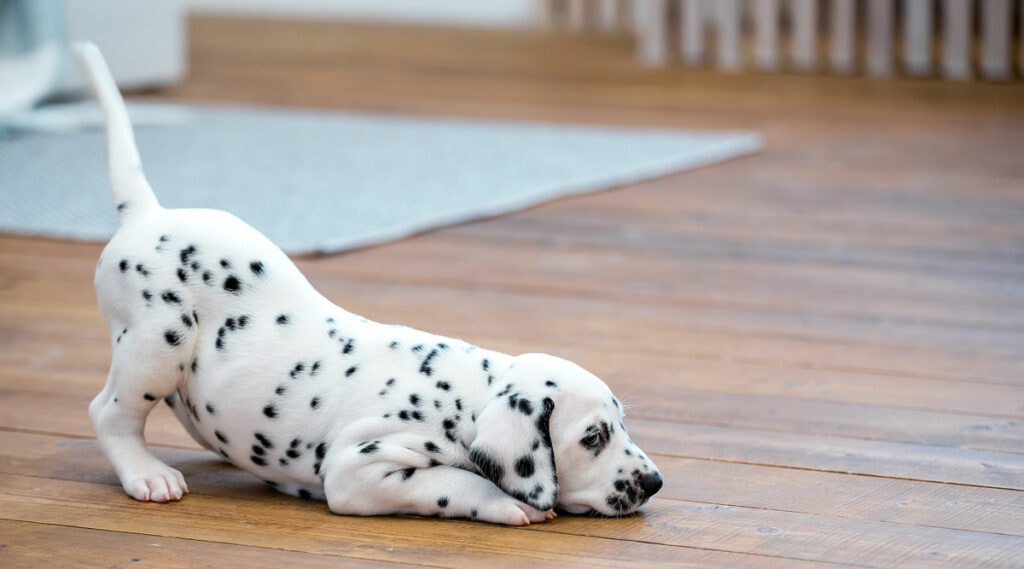
One way to tell if your puppy is still growing is to feel their ribs. If you can feel the “knobs,” then your puppy is probably still growing, but if not, they’re probably about as big as they’ll get.
While this method is useful, it shouldn’t be used as a basis for decisions affecting your dog’s health. Instead, consult your veterinarian for advice about when your puppy has stopped growing.
Can You Estimate How Big a Puppy Will Get?
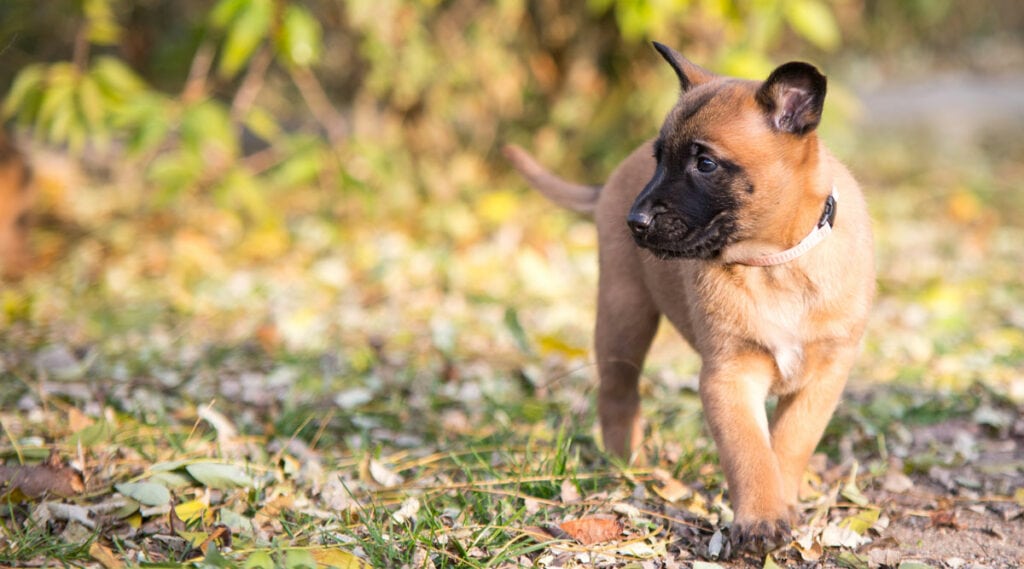
It’s not possible to be certain about the size a puppy will eventually reach. Even if you know the size of both the dog’s parents, this doesn’t mean the puppy will look exactly the same.
“Owners sometimes assume that growth is predictable and a puppy will be a copy of their parents,” says Dr Linda Simon, veterinary surgeon. “The reality is that we can broadly predict growth rate, but there is always individual variation.”
Are there any tricks you can use to estimate a puppy’s final size, though? “One thing we can look at is a puppy’s paw size,” says Dr Simon. “It is quite true that the larger the paws as a puppy, the bigger the dog will be!”
Exercise As Your Dog Grows
Before your dog’s growth plates close, they are soft and easier to damage. This is why you should be careful not to over-exercise your dog until they are fully grown and the plates are closed.
“Dogs that grow rapidly, including giant breeds like the Great Dane and Mastiff, are more prone to orthopedic disorders,” says Dr Simon. “Over-exercising can be a contributing factor, so it’s wise for owners to get help from their vet when making an exercise plan for a giant breed dog.”
However, the standard “5 minutes of exercise per day per month of age” rule may not be enough for some dogs, who could become bored and stressed with such a restrictive program.
Of course, you shouldn’t be taking a young puppy for long hikes. But the most important thing is to avoid exercise that’s particularly stressful for the joints, such as repetitive jogging on hard pavements or ball chasing.
Instead, puppies should be walked on soft ground and in a safe, appropriate way. Read our guide to dog exercise to learn more.
Summary
It can be difficult to guess when a dog is likely to stop growing. While most dogs reach full size at around 9-11 months old, this depends on a variety of factors, such as breed size, diet, health, and genetics.
As a general rule, bigger dogs tend to stop growing later than smaller breeds. Male dogs also typically grow larger than females of the same litter, while health issues can stunt a puppy’s growth.
We hope this article has helped you learn more about when dogs stop growing. Please let us know in the comments section below if you have any questions. You may also want to read our guide to bonding with a puppy.
